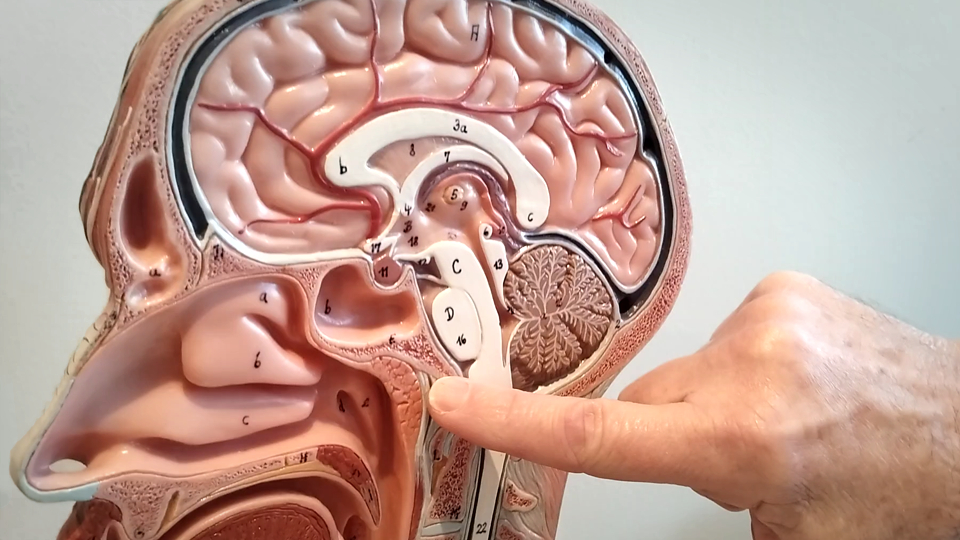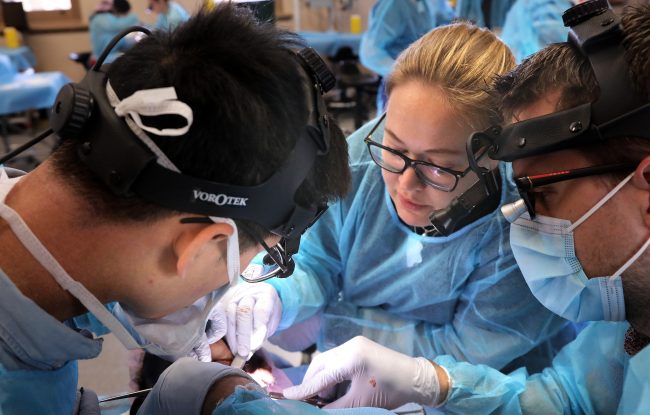The Case of a Recurrent Chordoma
Recently I collaborated with Dr Tim Steel, neurosurgeon, to remove a recurrent Chordoma. Chordomas are slow growing tumours that are locally invasive and this particular one had been operated on previously, first in 2011 and then 2014. A typical skull base Chordoma is located in the area at the back of the nose called the clivus which is part of the bone at the base of the skull. This third operation was required because it had regrown to the extent that it was impinging on nerves to the left eye. As a consequence the patient had visual disturbance and started to have double vision in the left eye.
Our approach was to perform an endoscopic removal. The tumour was pushing against the brainstem and pushing up into the brain. So we did an operation where we came through the nose and then endoscopically (using telescopes) removed bone, creating a hole around 3 cm in size which exposed the tumour and allowed us to take it out. My first task was to provide access, basically opening up the area for the neurosurgeon. Then we removed the tumour and at the end of the operation I repaired the access hole created at the outset. There is some urgency here since at this point cerebral spinal fluid (CSF) is leaking through. In the case of patients who have had previous operations this final step becomes more difficult. I would say that it is probably the hardest part of the whole operation. The operation that Dr Steel and I performed went very well and the patient made a complete recovery.
Patients will often ask, understandably, if Chordoma is a malignant tumour. That is a tricky one to answer. Generally they are always benign, yet they do have a small potential for malignancy. I have rarely seen the malignant variant, however the main problem of most Chordomas is that they are what we call malignant by their position. That is, they behave in a malignant manner, growing into the base of the skull and then pushing against the brainstem and pushing against the nerves going to the eyes. So whilst most Chordoma tumours are benign, it is their location that causes severe symptoms that are cancer like.
These kinds of operations are, thankfully, not performed frequently. Chordomas are in fact a very rare type of tumour, they are extremely uncommon. That said, if any patient presents with blurry or double vision, headaches, face or neck pain, facial numbness and possibly accompanied by swallowing or speaking problems then further diagnosis is required.



